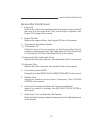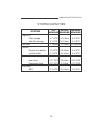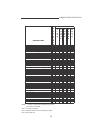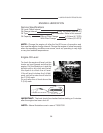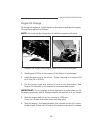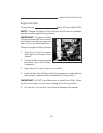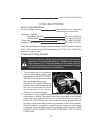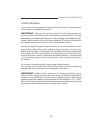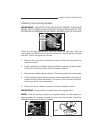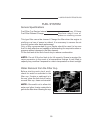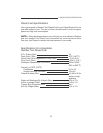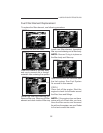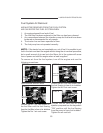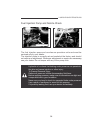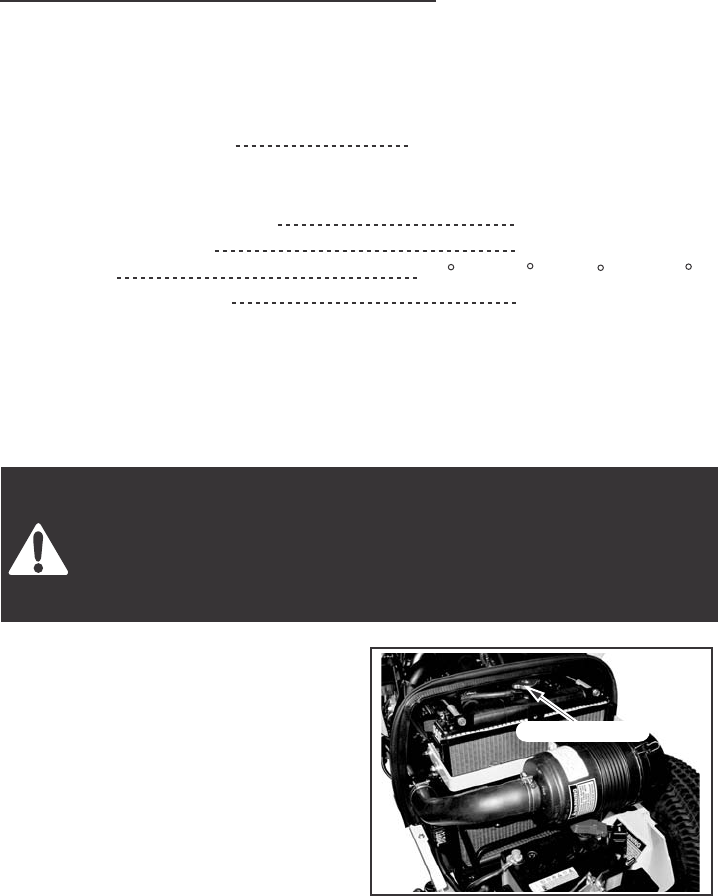
LUBRICATION/FILTERS/FRUIDS
87
COOLING SYSTEM
Service Specifications
Coolant Change Interval Every 1000 hours or once each
year whichever occurs first.
Capacity of System
Engine and Radiator 5.5 Liters (5.8 QTS)
Coolant bottle 0.4 Liters (0.4 QTS)
Thermostat 82 C to 95 C (180 C to 203 F)
Radiator Cap Pressure 88.2 kPa (12.8 PSI)
Daily before starting the engine, check the coolant level the coolant reserve
bottle. The coolant level should be between the "FULL" and "LOW" lines
when the engine is cool.
Pressure Cooling System
Check and service cooling system according to maintenance
instructions. Hot coolant can spray out if radiator cap is removing
while system is hot. To remove radiator cap, let system cool, turn
to first notch, and then wait until all pressure is released. Scalding
can result from fast removal of radiator cap.
1. The pressure cap on a pressure
cooling system has a control valve
that operates as a SAFETY RELIEF
VALVE to keep the pressure within
the system operating range.
Operating the engine without a
pressure cap or with a pressure cap
that has a control valve that is not
set to operate at the correct
pressure can cause damage.
2. A pressure cooling system decreases the loss of coolant caused by
evaporation or boiling. The system must have good seals at the radiator
cap, hoses and hose connections. It is important that you stop ALL
LEAKS OF ANY SIZE as soon as the leaks are found. A small leak can
become a large flow when pressure is increased in the cooling system.
While the tractor is in operation, a weak hose can break and cause injury
or damage. Check all hoses and hose connections with frequency. KEEP
HOSES, HOSE CONNECTIONS AND PRESSURE CAP IN GOOD
CONDITION.
PRESSURE CAP



